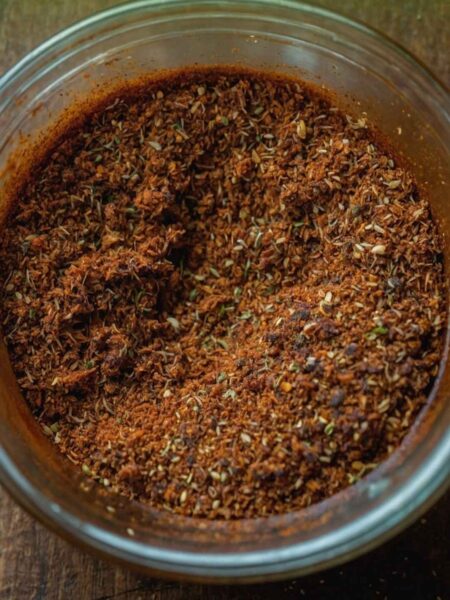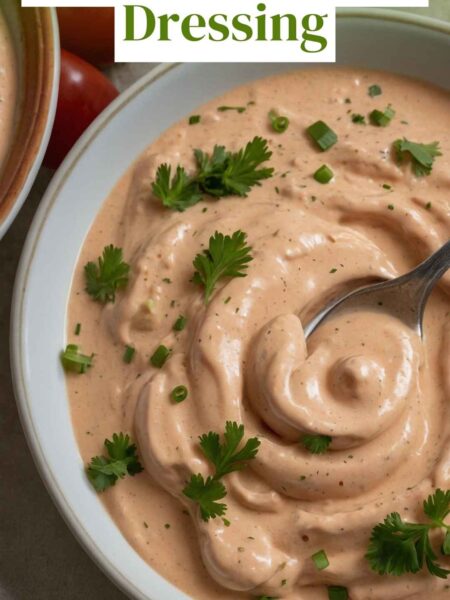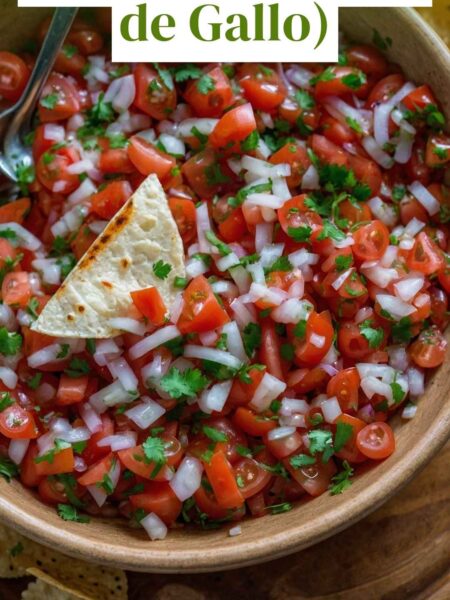Before diving into the homemade chimichurri sauce, think about what you could serve with it. It pairs beautifully with grilled steaks, roasted vegetables, or even drizzled over a crisp salad. Picture a perfectly grilled flank steak draped in a vibrant chimichurri.
Imagine squeezing that sauce onto a roasted potato. Yes, please! It’s like that friend who gets along with everyone at the party.
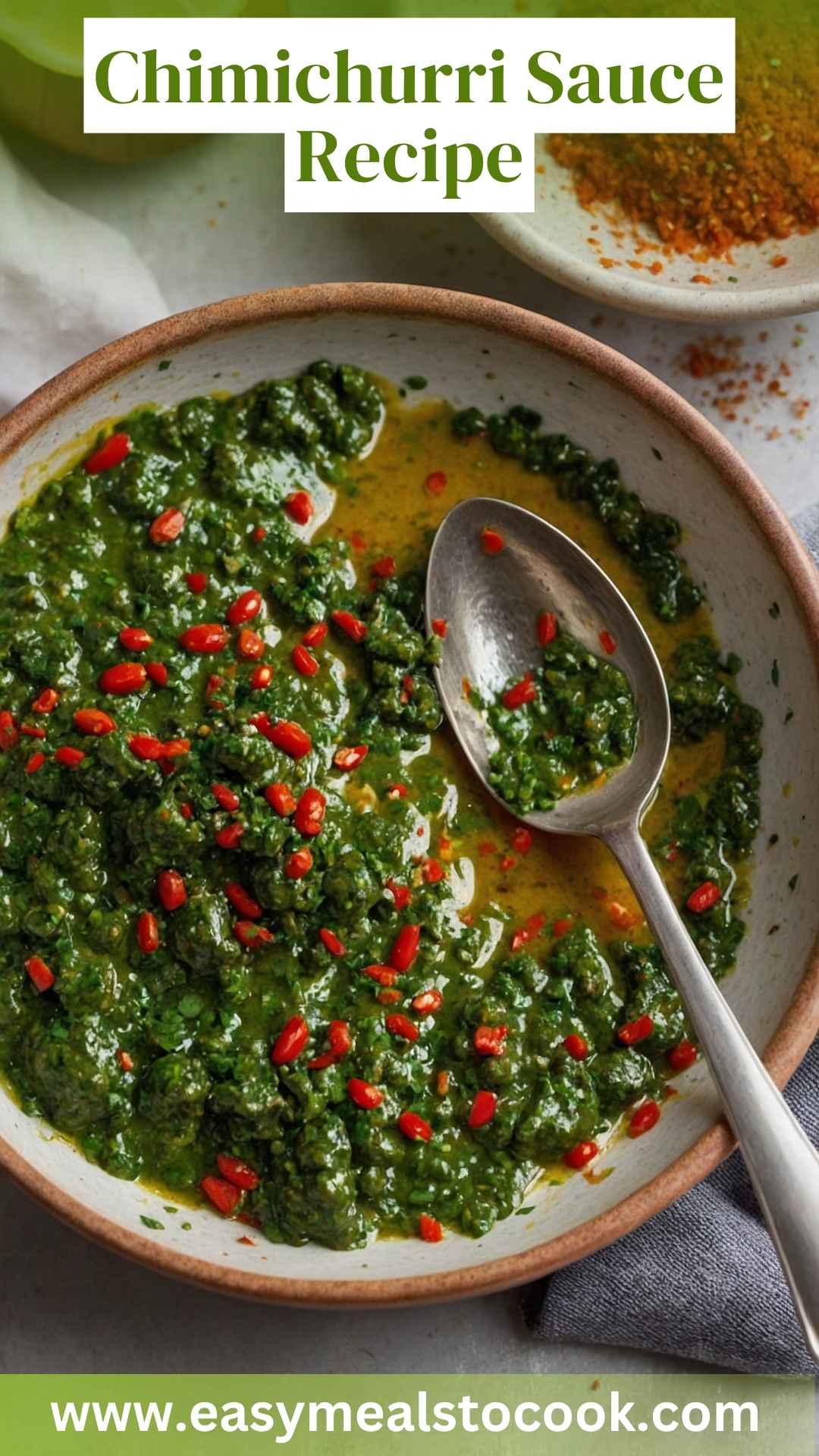
What is Chimichurri Sauce?
At its heart, chimichurri sauce is a fresh herb condiment that is usually a blend of parsley, garlic, vinegar, and oil. It’s a staple in Argentinian cuisine, often served with grilled meats. Imagine a herbal explosion that cuts through the richness of meat with a tangy punch. The beauty of this sauce lies in its simplicity and the bright, fresh ingredients that can transform everyday meals into special occasions.
The Flavor Profile
Chimichurri is a delightful mix of tangy, garlicky, and slightly spicy flavors. When you take a bite, the garlic hits first, followed by the herbaceous notes of parsley, and then a mild heat from red pepper flakes.
The vinegar adds a sharpness that balances nicely with the smoothness of olive oil. It’s a flavor that dances on your palate.
What Makes This Recipe Different?
Many versions of chimichurri exist, but what sets my recipe apart is the use of smoked paprika and lemon zest.
These ingredients add depth and brightness. While traditional recipes provide a solid foundation, these small tweaks elevate the overall experience, making your taste buds celebrate. Trust me, you’ll find yourself sneaking extra bites just to savor that wonderful zest!
Ingredients You’ll Need
Here’s a quick rundown of the essential ingredients you’ll gather:
- 1 teaspoon freshly squeezed lemon juice (for a bright pop)
- ¼ teaspoon dried oregano leaves
- ½ teaspoon fine sea salt
- 1 garlic clove, minced finely
- ⅓ cup cold-pressed extra-virgin olive oil
- ¼ teaspoon smoked sweet paprika (this one’s key)
- ½ cup fresh flat-leaf parsley, finely chopped (about 1 bunch, tough stems removed)
- 1 teaspoon grated lemon zest (a touch of citrus magic)
- 2 tablespoons white wine vinegar
- ¼ teaspoon crushed red chili flakes
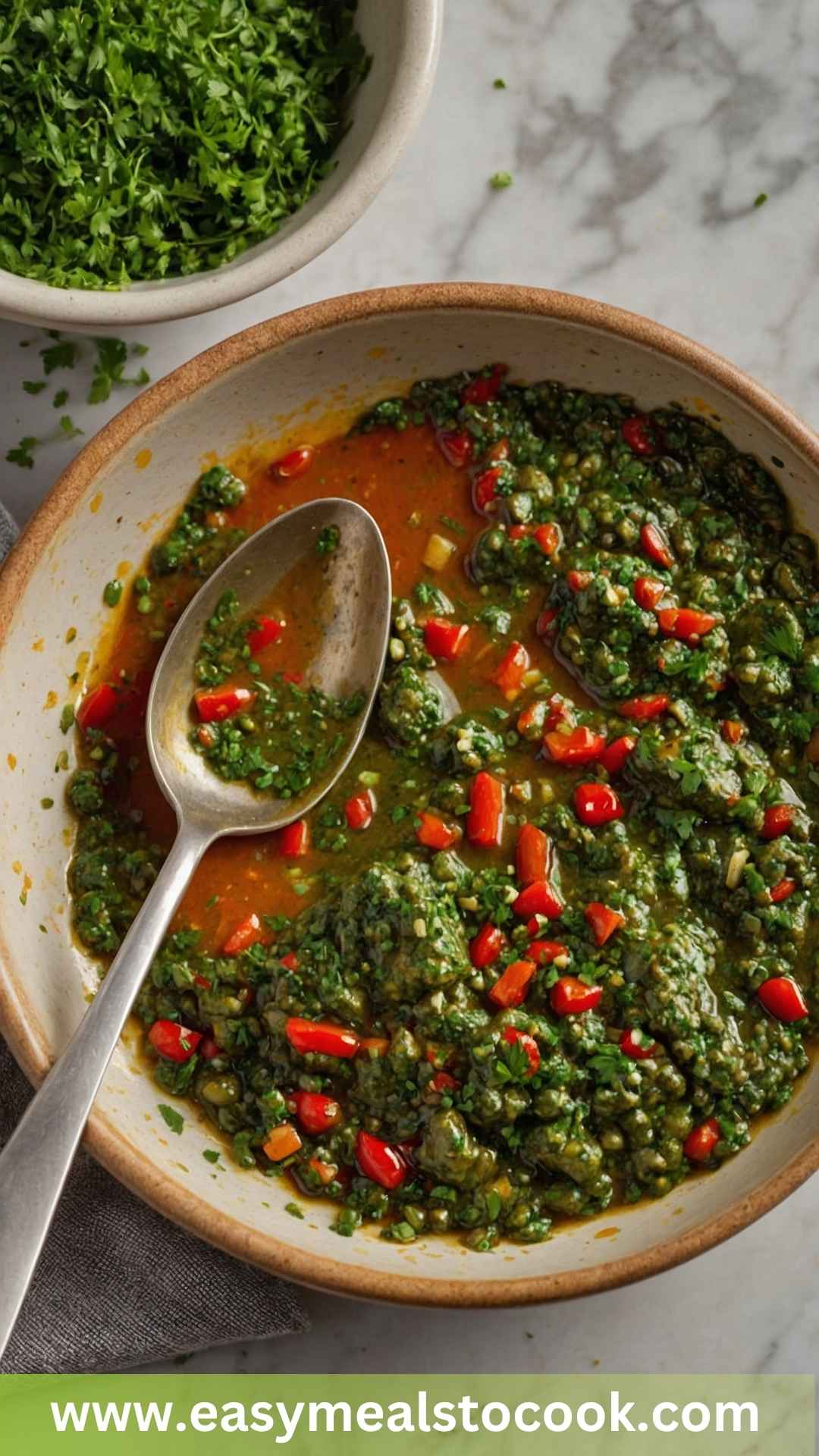
Step-by-Step Directions
Step 1: Prepare Your Ingredients
Start by washing and drying your parsley. It’s essential to get rid of any excess water. Chop it finely—this will be the star of your sauce. You don’t want any big chunks disrupting the smooth consistency.
Step 2: Mince the Garlic
Taking your garlic clove, smash it with the side of your knife first. Then mince it finely. No one enjoys biting into a big clove of raw garlic, so smaller pieces blend better.
Step 3: Combine the Dry Ingredients
Grab a mixing bowl and toss in the oregano, salt, smoked paprika, and red chili flakes. A quick stir will blend these dry ingredients nicely.
This step ensures that flavors are distributed evenly throughout the chimichurri.
Step 4: Add the Fresh Ingredients
To the same bowl, add your freshly chopped parsley, grated lemon zest, and minced garlic. The colors will be vibrant and inviting. It’s like a fresh garden in a bowl.
Step 5: Stir in the Liquid Ingredients
Now, let’s introduce the liquids! Pour in the olive oil, white wine vinegar, and lemon juice. Using a fork, mix everything together. This is where the magic happens. The oil will help bind all the flavors.
Step 6: Taste and Adjust
Give your chimichurri a taste test. Feel free to tweak the salt, lemon, or vinegar to make it perfect for your palette. Don’t be shy! Cooking is an experiment, and you’re the scientist.
Tips on Making Chimichurri Sauce
To make your chimichurri even better, here are five handy tips:
- Use Fresh Herbs: Fresh parsley makes a world of difference. Dried herbs can work in a pinch but won’t provide the same brightness.
- Don’t Skip the Zest: Grated lemon zest enhances aromas and adds a layer of flavor. It’s worth the extra step!
- Blend for Smoothness: For an ultra-smooth chimichurri, try using a blender instead of hand mixing. This creates emulsification, making the sauce more cohesive.
- Experiment with Herbs: If you’re feeling adventurous, add cilantro or basil to the mix. They can give a unique spin on the traditional recipe.
- Serving Temperature Matters: Chimichurri is best served at room temperature. So, let it sit for a bit before drizzling it onto your dishes.
Nutrition Information
Here’s a brief breakdown of the nutrition for a 1-tablespoon serving of chimichurri sauce:
- Calories: 90
- Total Fat: 10g
- Saturated Fat: 1.5g
- Cholesterol: 0mg
- Sodium: 140mg
- Total Carbohydrates: 1g
- Dietary Fiber: 0g
- Sugars: 0g
- Protein: 0g
Chimichurri is low in calories and adds vibrant flavor to your meals without piling on unwanted extras.
Storing Chimichurri Sauce
Wondering how to store your chimichurri? Place it in an airtight container in the fridge. It typically lasts about one week. Just give it a quick stir before each use, as some ingredients may settle.
Ingredient Substitutes
If you realize you’re missing something, don’t panic! Here are some substitutes:
- Chopped Green Onions can replace garlic. They offer a milder flavor.
- Lime Juice can be a stand-in for lemon juice. It brings its own zesty charm.
- Red Wine Vinegar works instead of white wine vinegar for a deeper color and taste.
- Fresh Cilantro can be used instead of parsley for a different herbal profile.
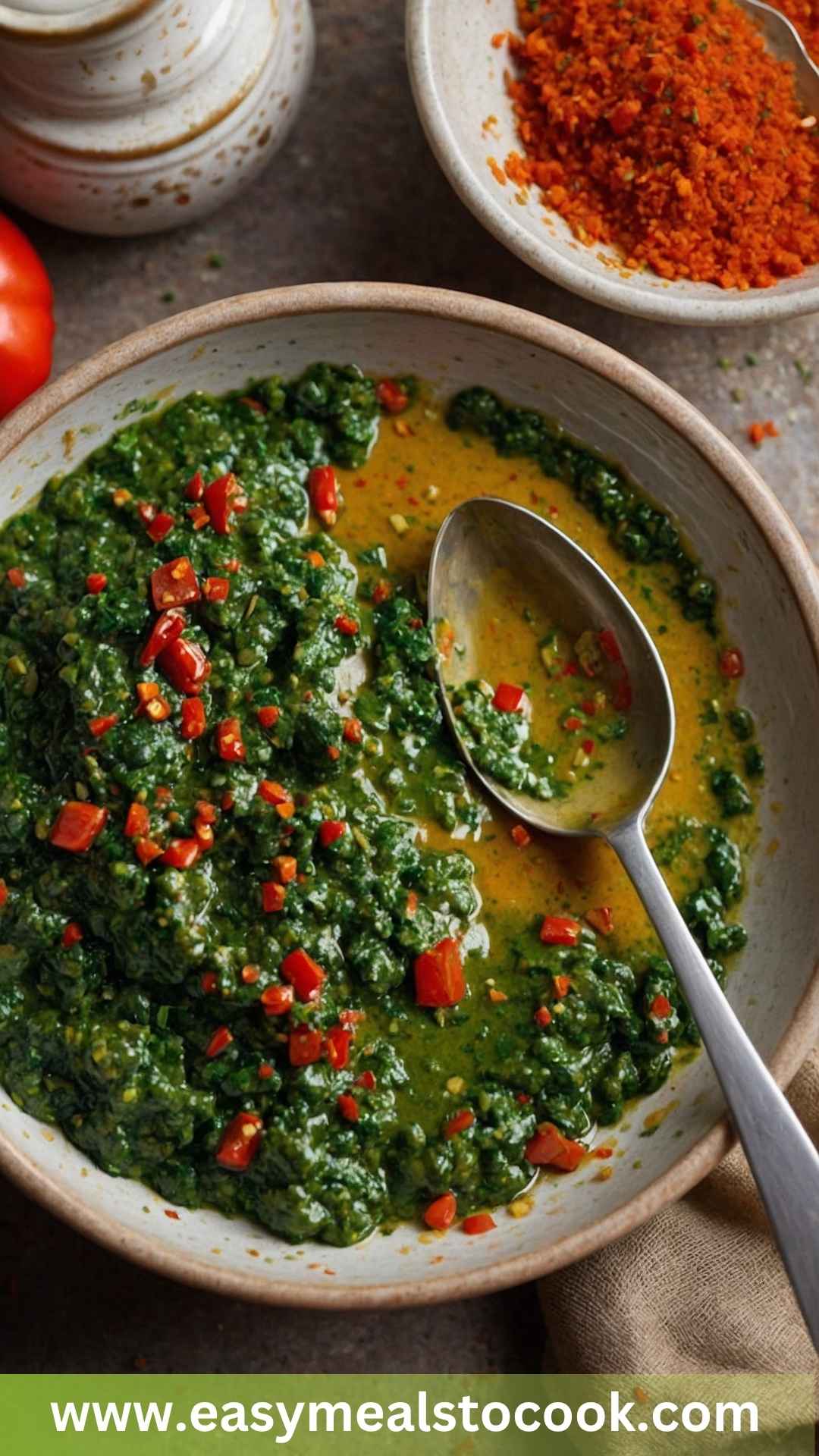
Conclusion
Chimichurri sauce isn’t just a condiment; it’s a culinary celebration. Its fresh ingredients, vibrant flavors, and versatility make it a must-have in any kitchen. Whether you’re dressing up a weeknight dinner or bringing it along to a summer BBQ,
I hope this recipe encourages you to get adventurous. Share it with friends and family, and don’t forget to play around with flavors! So grab your ingredients, get chopping, and enjoy this delightful blend right at home. Your taste buds will thank you!
You’ll also like the following recipes!
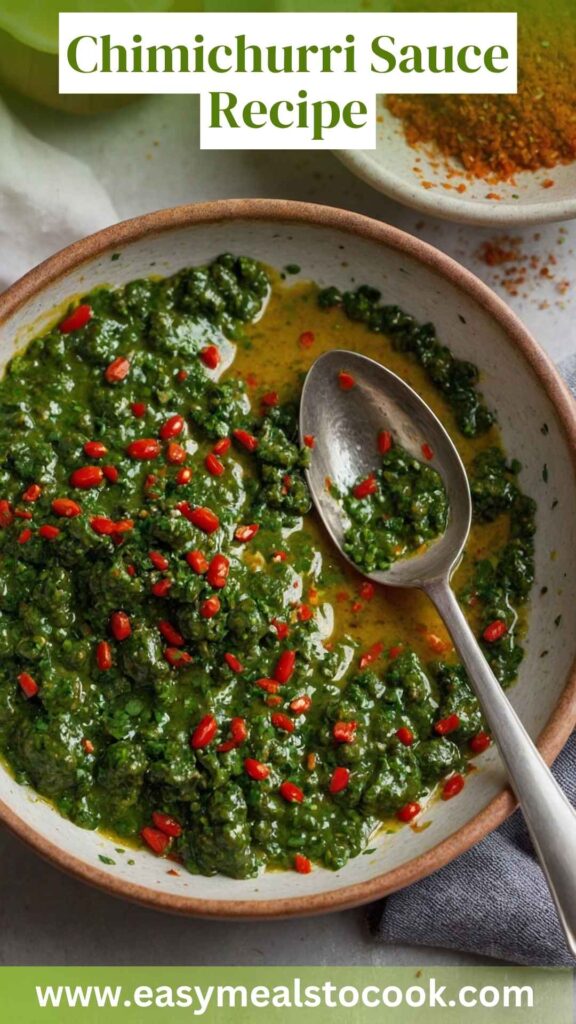
Chimichurri Sauce Recipe – Easy Meals To Cook
Description
When it comes to sauces, few can brighten a dish quite like chimichurri. Originating from Argentina, this green sauce is not only full of flavor, but it also brings a splash of color to any plate.
On those lazy summer afternoons, when the grill is sizzling and laughter fills the air, chimichurri stands out. In this piece, I’ll walk you through my favorite version of chimichurri sauce—straight from my kitchen to yours. I promise you’ll be whipping it up and slathering it on everything in no time!
Ingredients
Instructions
Step 1: Prepare Your Ingredients
-
Start by washing and drying your parsley. It’s essential to get rid of any excess water. Chop it finely—this will be the star of your sauce. You don't want any big chunks disrupting the smooth consistency.
Step 2: Mince the Garlic
-
Taking your garlic clove, smash it with the side of your knife first. Then mince it finely. No one enjoys biting into a big clove of raw garlic, so smaller pieces blend better.
Step 3: Combine the Dry Ingredients
-
Grab a mixing bowl and toss in the oregano, salt, smoked paprika, and red chili flakes. A quick stir will blend these dry ingredients nicely.
This step ensures that flavors are distributed evenly throughout the chimichurri.
Step 4: Add the Fresh Ingredients
-
To the same bowl, add your freshly chopped parsley, grated lemon zest, and minced garlic. The colors will be vibrant and inviting. It’s like a fresh garden in a bowl.
Step 5: Stir in the Liquid Ingredients
-
Now, let’s introduce the liquids! Pour in the olive oil, white wine vinegar, and lemon juice. Using a fork, mix everything together. This is where the magic happens. The oil will help bind all the flavors.
Step 6: Taste and Adjust
-
Give your chimichurri a taste test. Feel free to tweak the salt, lemon, or vinegar to make it perfect for your palette. Don’t be shy! Cooking is an experiment, and you’re the scientist.
Nutrition Facts
Servings 4
- Amount Per Serving
- Calories 90kcal
- % Daily Value *
- Total Fat 10g16%
- Saturated Fat 1.5g8%
- Sodium 140mg6%
- Total Carbohydrate 1g1%
* Percent Daily Values are based on a 2,000 calorie diet. Your daily value may be higher or lower depending on your calorie needs.
Note
- Use Fresh Herbs: Fresh parsley makes a world of difference. Dried herbs can work in a pinch but won’t provide the same brightness.
- Don’t Skip the Zest: Grated lemon zest enhances aromas and adds a layer of flavor. It's worth the extra step!
- Blend for Smoothness: For an ultra-smooth chimichurri, try using a blender instead of hand mixing. This creates emulsification, making the sauce more cohesive.
- Experiment with Herbs: If you’re feeling adventurous, add cilantro or basil to the mix. They can give a unique spin on the traditional recipe.
- Serving Temperature Matters: Chimichurri is best served at room temperature. So, let it sit for a bit before drizzling it onto your dishes.



